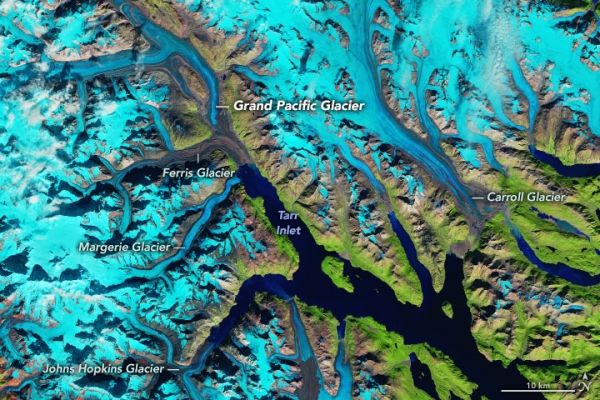In Glacier Bay National Park, the rugged landscape of water, ice, and life is in flux. Icebergs tumble from the fronts of glaciers, and plants are filling in where ice once covered the ground. Scientists and park staff have had a front row seat to all of the dynamic changes through the seasons and years.
“Seeing glaciers like Margerie, Lamplugh, Reid, and Grand Pacific is like seeing old friends,” said Emma Johnson, an education specialist at the park in southeastern Alaska. “I can recognize them immediately and tell how they have changed from week to week.”
The glaciers are all located in the West Arm of Glacier Bay, part of the Y-shaped inlet that is home to the majority of the park’s tidewater glaciers. Until the late 1980s, the park’s daily tour boat cruised up the bay’s East Arm for close-up views of tidewater glaciers—so-called because they flow directly into seawater. But the retreat of the East Arm glaciers onto land has sent tour boat operators into the West Arm instead, where a handful of impressive glaciers still touch the sea.
Continue reading at NASA Earth Observatory
Image via NASA Earth Observatory


